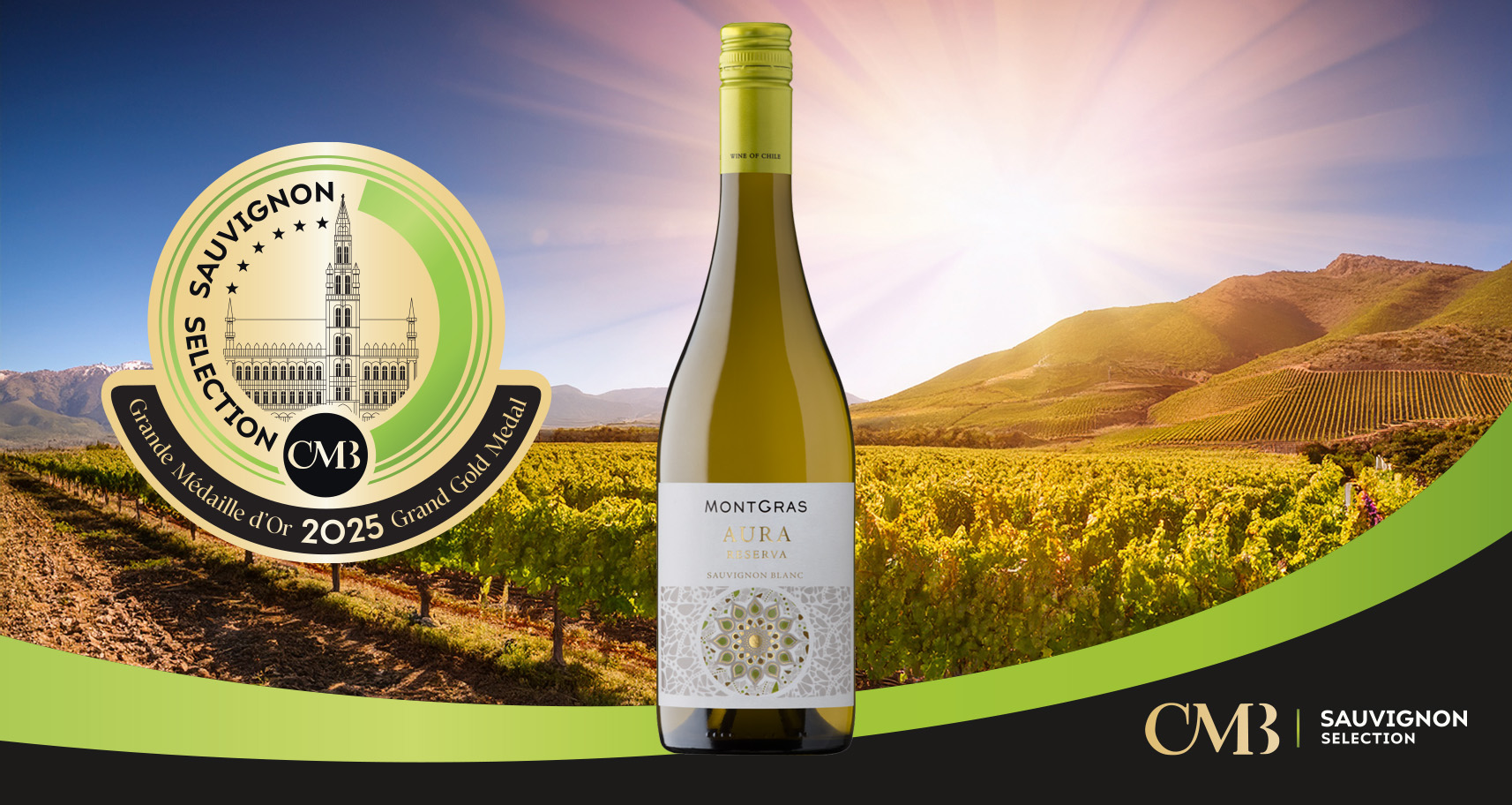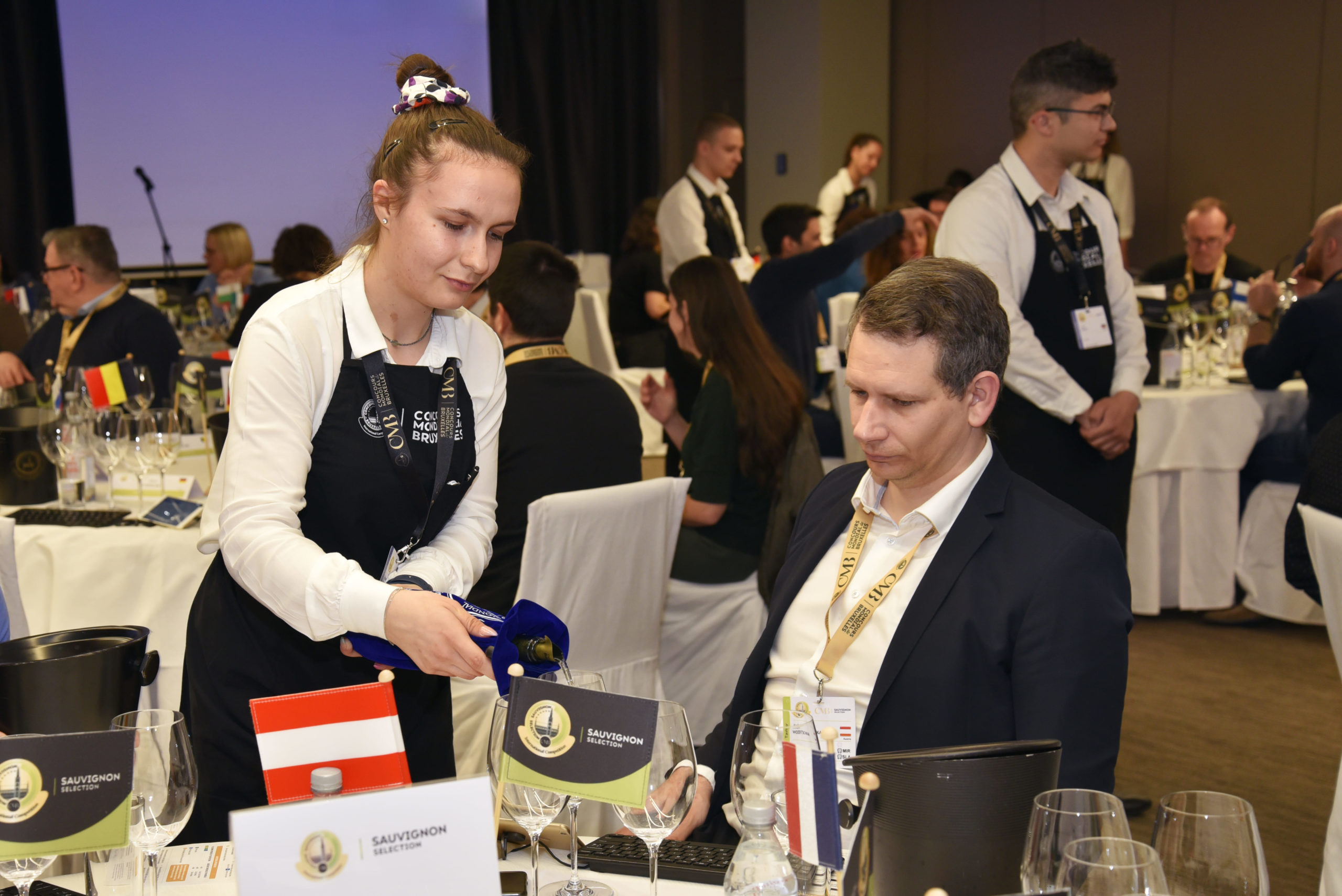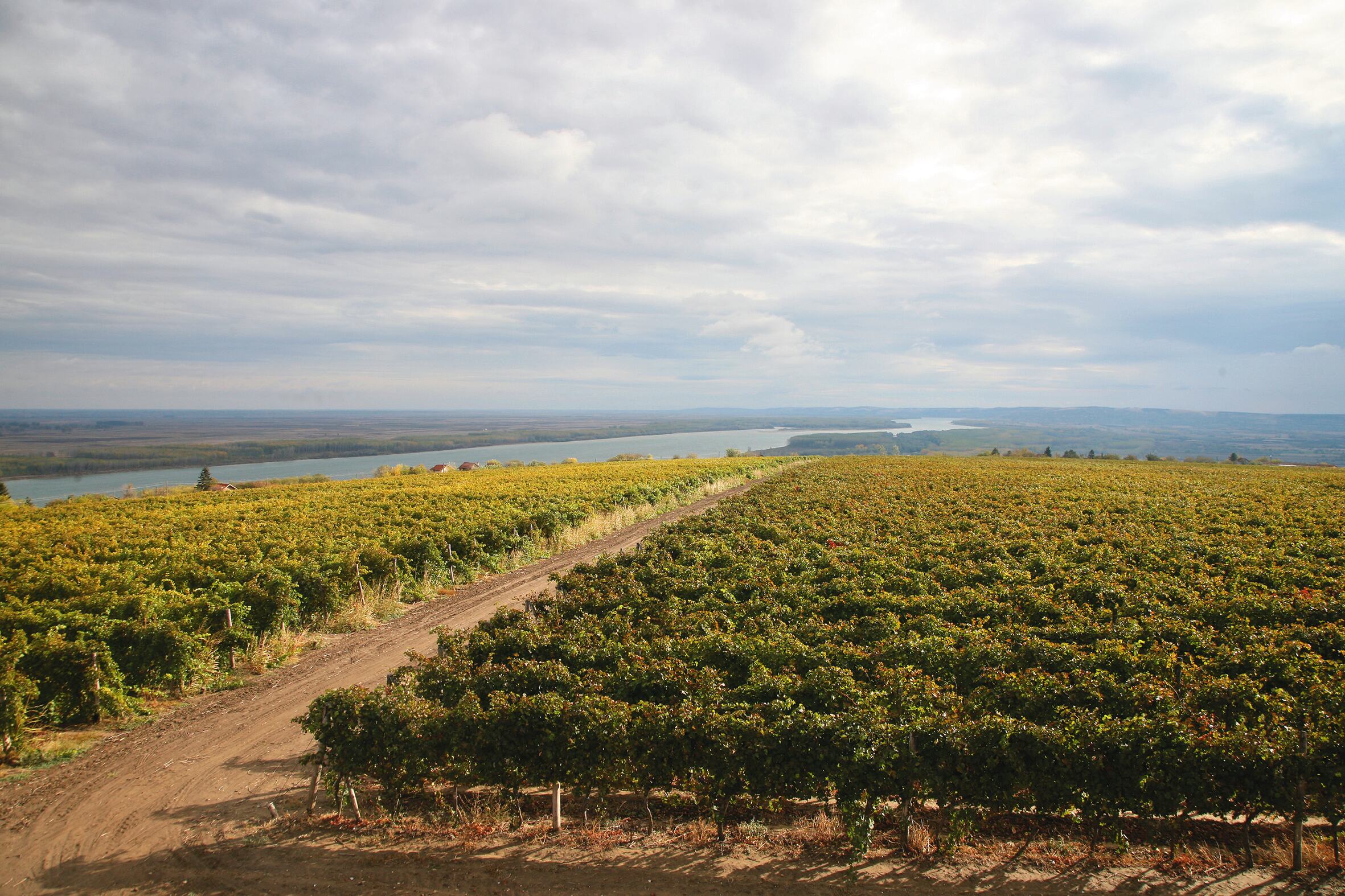South Africa
South Africa
South Africa is often classed among ‘New’ World winegrowing countries but its vinous history actually dates back to the 17th century when the Cape’s firstgovernor, Jan van Riebeeck planted a vineyard and harvested the country’s first wines in 1659. The introduction of Sauvignon to South Africa can be less preciselydated but it is known that Sauvignon vines were planted at the highly lauded Groot Constantia estate in the late 1880s. According to Sauvignon Blanc SouthAfrica, the first commercial Sauvignon varietal wine was produced by Verdun (now Asara) in 1977, with Backsberg and De Wetshof entering the fray in 1980. The oldest Sauvignon vineyards were planted in 1965 at Spice Route, with Bloemendal joining in the early 1970s. Currently, Sauvignon holds a 10.5% share of total wine grape acreage in South Africa and is the fourth-most planted grape in the country, irrespective of colour. Although Stellenbosch tops the league table for acreage, Sauvignon is widely distributed across all the winegrowing regions of South Africa. The extremely varied geology and topography that characterise the Western Cape create myriad vineyard sites and as many variations on a theme for Sauvignon.
REGIONAL SAUVIGNON DISTRIBUTION
A significant chunk of Sauvignon vines are located in Stellenbosch (2,619 ha in 2019), but there are also extensive areas in Robertson (1,597 ha), Breedekloof (1,232 ha) and Swartland (1,157 ha), followed by Paarl (921 ha), the Cape South Coast (782 ha), Worcester (626 ha) and Olifants River (589 ha). Interestingly, Sauvignon is grown in both cool and warm areas, with the proximity of two major oceans – the Atlantic and the Indian oceans – and varying elevations and aspects moderating the heat; the cooler southern and eastern slopes are favoured for more delicate varieties such as Sauvignon. Also, the rugged terrain and lofty peaks across the Western Cape offer a welcome source of shade, restricting the amount of sunlight hours to no more than ten on the longest day in mid-summer. Elevations can range from 50 m for some of the lowest vineyards in the country to over 600 m in the mountains.
PREDOMINANT CLIMATE PATTERNS AND SOIL TYPES
South Africa’s climate is Mediterranean and many of its wine regions are located along the coastal area, thereby benefiting from cool sea breezes and seasonal fog. Frost is rarely a problem though in recent years drought has proved to be a major headache for South Africa’s winegrowers. The poetically, andfor vines, aptly-named south-easterly wind – the Cape Doctor – sweeps across the south-western Cape over the summer and spring, lowering the temperature byseveral degrees and limiting the spread of disease. Cool climate regions such as Elgin, Durbanville and Elim have pioneered the production of quality Sauvignonin South Africa but whilst it might seem counter-intuitive to plant the varietal in warmer regions such as the Breede river valley, the resultant wines have garnered attention and accolades in recent years.
South Africa prides itself on being home to some of the world’s oldest viticultural soils, which can date back to 1,000-500 million years ago. Its rich geologicaltapestry is reflected in the range of soil types, running the gamut from shale/schist to granite and sandstone. The country’s three most important soil types are classed as being derived either from Table Mountain sandstone, granite or shale.Winegrowers capitalise on the infinite possibilities afffforded by the pronounced difffferences in geology and topography, planting vines along the valley floors,over rolling hills and up steep mountain slopes. When combined with varying aspects and micro-climates, the reason for African Sauvignon’s broad stylistic spectrum becomes self-explanatory.
WINE PROFILES
According to prominent Sauvignon advocates such as RJ Botha, winemaker at Kleine Zalze and chair of Sauvignon Blanc SA, the varietal’s popularity stems from the fact that producers have not “allowed themselves to be boxed into definite stylistic parameters”. This willingness to capitalise on site-expressiveness and experiment, both in the vineyard and the winery, has spawned a range of profiles that encompasses all the major flavour and aroma features you would expect to find in Sauvignon, irrespective of its country of origin. Both flavour and texture are bolstered by increased use of oak, or at least partial oak fermentation or ageing, and time spent on the lees, for example.
TYPICAL ALCOHOL CONTENT
As you would expect of a relatively warm climate, many South African Sauvignons fall within the 12.5-13.5% ABV bracket, though some can weigh in at a hefty 14.5% ABV. Researchers such as Dr Carien Coetzee are encouraging producers to consider lower alcohol versions, due to growing market demand, and have flagged up the potential for Sauvignon blanc to tick all the requisite boxes: its potent aromatics; sensory factors such as sweetness and sufficient acidity that can compensate for possible loss of body; and consumer trust and familiarity with the varietal.
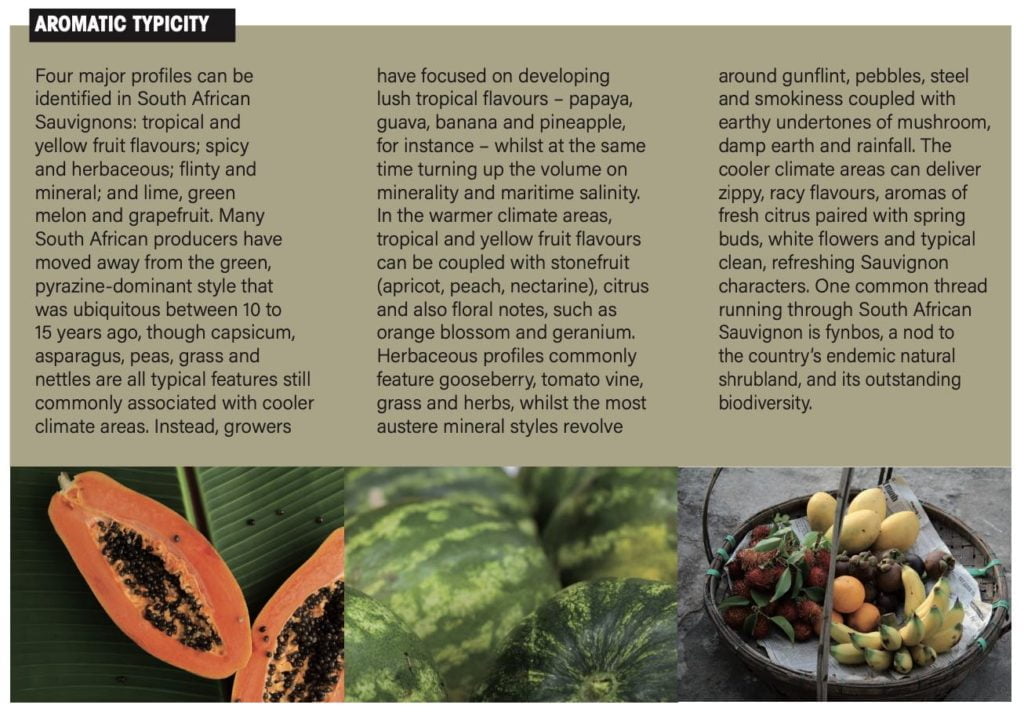
OTHER POSSIBLE AROMAS
South African Sauvignon producers are increasingly looking to wood to add complexity and longevity to their wines. As a bellwether for industry trends, the Sauvignon Blanc SA Top 10 competition revealed that the majority of award-winning wines in 2020 received some form and percentage of oak contact during production, either at fermentation
stage or for maturation. However, the use of large oak vessels and/ or used or neutral barrels in many of the wines underscored an intention to seek subtle influence rather than overt oaky flavours. Also, increased reliance on natural wild yeast along with the presence of gross and fine lees for varying durations are further broadening the aromatic spectrum and flavour profiles.
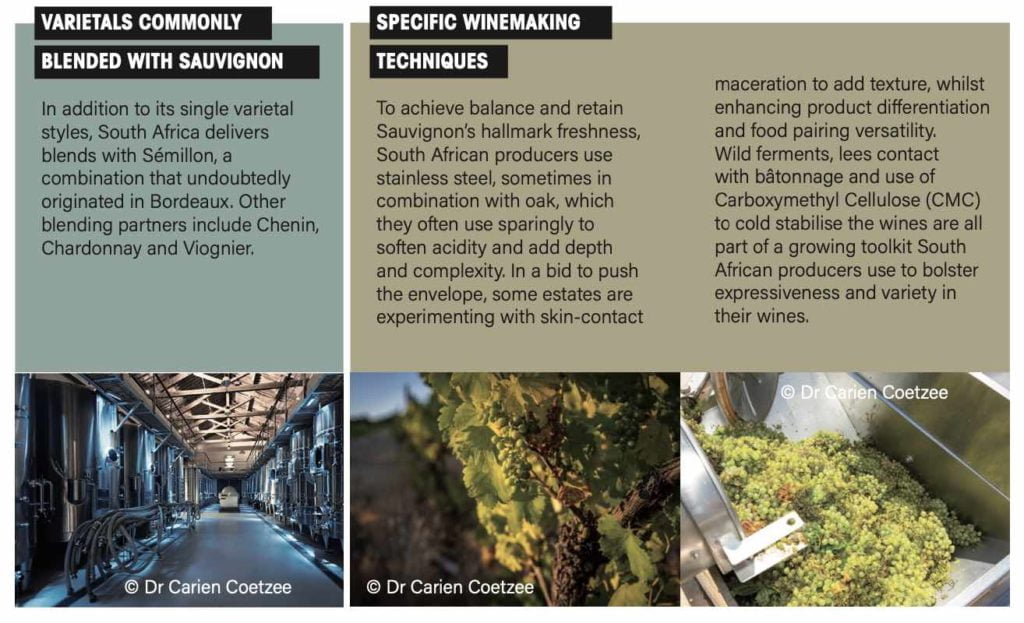
HOW INNOVATION IS GIVING WINERIES AN EDGE
Thys Louw, owner of Diemersdal Wine Estate in Durbanville, has not only experimented with skin-contact maceration – he has pushed the boundaries of Sauvignon winemaking even further by producing a winter-fermented version. In 2017, he turned the South African wine industry on its head by freezing the juice of machine- harvested Sauvignon grapes for four months in plastic tanks placed in refrigerated shipping containers, then gently thawing it in the winter sun and fermenting and vinifying it as per normal practice. The resultant wine delivers intense aromas of gooseberries, guava and sweet grapefruit with a core of minerality and a rich, mouth- filling texture. Compared to its non-frozen counterpart, it showed unexpectedly high concentrations of volatile thiols responsible for Sauvignon’s tropical fruit, grapefruit and tomato leaf aromas. In addition to its enhanced flavour attributes, the wine offers the added bonus of alleviating some of the harvest pressure on the winery. From a marketing perspective, winter fermentation is also a USP and the wine’s timely release, several months after conventional Sauvignons, bolsters its competitive edge. Sources: Sauvignon Blanc SA
Sharon Nagel
Every month, a different producer country will be featured, from the classics such as France and New Zealand to more unexpected destinations such as Austria or Spain. For the next one, we go to Italy.
